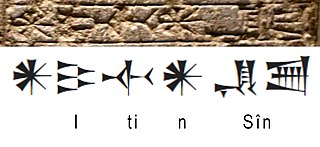 W
WDingir is a Sumerian word for "god" or "goddess." Its cuneiform sign is most commonly employed as the determinative for religious names and related concepts, in which case it is not pronounced and is conventionally transliterated as a superscript "d" as in e.g. dInanna.
 W
WÉ is the Sumerian word or symbol for house or temple.
 W
WGAL is the Sumerian cuneiform for "great".
 W
WLugal is the Sumerian term for "king, ruler". Literally, the term means "big man." In Sumerian, lu "𒇽" is "man" and gal "𒃲" is "great," or "big."
 W
WThe Sumerian word NIN (𒎏) was used to denote a queen or a priestess, and is often translated as "lady". Other translations include "queen", "mistress", "proprietress", and "lord".
 W
WUkkin (UKKIN) is the Sumerian word or symbol for assembly, temple council or Divine council, written ideographically with the cuneiform sign 𒌺.
 W
WThe earliest cities in history were in the ancient Near East, an area covering roughly that of the modern Middle East: its history began in the 4th millennium BC and ended, depending on the interpretation of the term, either with the conquest by the Achaemenid Empire in the 6th century BC or that by Alexander the Great in the 4th century BC.